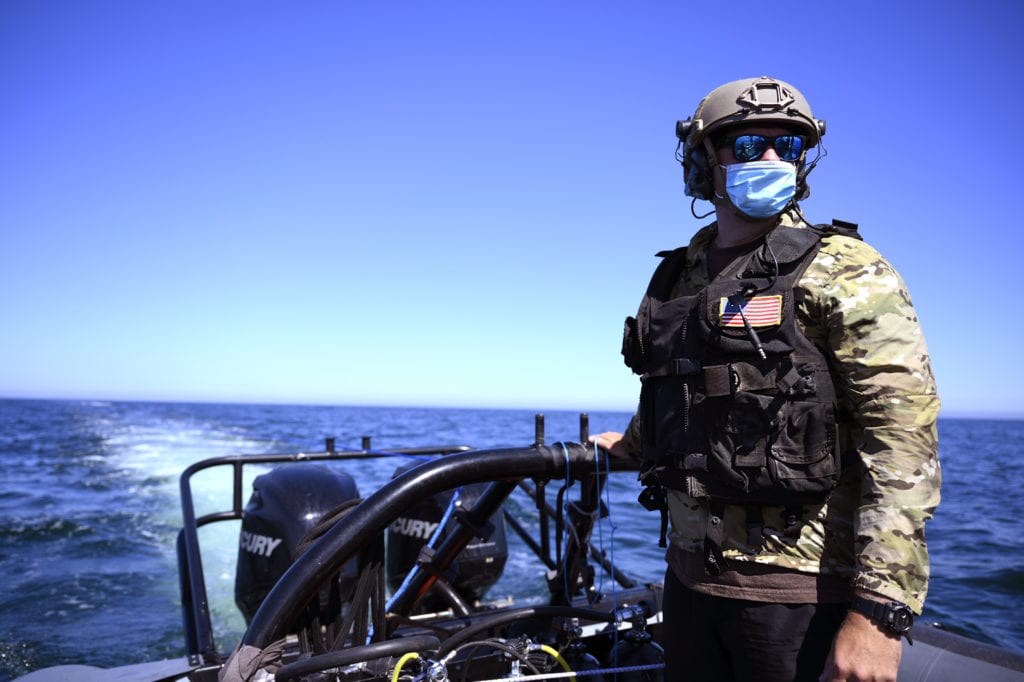
Top officials from several allied navies said cooperation and collaboration is one key way to bolster their capability in tough budget times.
U.S. Navy Rear Adm. Francis D. Morley, director of the Navy International Programs Office, led a Sea-Air-Space 2021 Prequel virtual session in July with international heads of navy, including speakers from the United Kingdom, Sweden, Spain and Japan.
Vice Adm. Nick Hine, second Sea Lord of the Royal Navy, said where possible, allies should move beyond interoperability and embrace interchangeability.
That is “not about individual naval units working together operationally, indeed tactically, but a strategic conversation about how we consider our entire approach to collaboration. This is about using our collective resource better to be more productive and deliver better security outcomes,” Hine said. “We have started that journey, but to be truly interchangeable with our allies, we must align strategic visions, cohere our planning and resources, jointly plan and execute operationally and technically, not only acting together but acting as one.”
That could include common doctrines, systems architecture, supply chains, data sharing as well as “common platforms and weapon systems that can be jointly developed and delivered to sovereign units,” he said.
As an example, he cited the U.K.’s Carrier Strike Group 21, led by the aircraft carrier HMS Queen Elizabeth, that has U.S. Marine Corps, Royal Navy and Royal Air Force F-35 pilots “flying and fighting together,” as the recently did in strikes against Daesh, the terrorist group also known as ISIS.
Another example he cited is the London Tech Bridge, an incubator which highlights American and British technology and rapidly exploits it.
“Even if we are unable to achieved interchangeability in full, the ambition and the drive towards it will strengthen interoperability between allied navies,” Hine said.
Rear Adm. Ignacio Villanueva Serrano, force commander of the Spanish navy, said a medium-sized navy such as his own needs to enhance several capabilities to stay relevant, including leveraging space as an extension of the air and sea, new “connectors and vectors for seapower projection” and unmanned systems, all of which, “one way or another, will be required in the new security and defense environment.”
Serrano and Hine both noted that technology is becoming more widely available across the board, to large navies and small actors alike.
The current environment is “marked by a struggle for technological superiority and easy access by all to emerging and advanced technologies, where it can be difficult to gain advantage in direct confrontation,” Serrano said. “In this context, the use of hybrid strategies will prevail and opposing actors will try to act at the limit of international legality, covered by fake news to manipulate public opinion and provoking critical doubts on the use of all military forces and capability.”
Navies such as those of Spain and Sweden need to modernize and beef up their capabilities, said Serrano and Rear Adm. Ewa Skoog Haslum, chief of navy for the Swedish Navy, the first woman to lead a branch of the country’s armed forces.
“Interoperability requires us to find both technology solutions and the continued develop of sharing recognized maritime picture with our different partners,” she said. “Together, we are not only stronger, but better.”
She cited the recent Baltic Operations (BALTOPS) exercise, which celebrated its 50th anniversary this year and included 16 NATO nations and two partner nations, including Sweden.
Sweden is embarking on a military buildup that will see mid-life updates on corvettes, including adding electronic warfare suites and air defense missiles, four new surface combatants, with two arriving by 2030, operationalizing a fifth new submarine and re-establishing a marine regiment on the country’s west coast, among other changes.
Next year will mark the 500th birthday of the Royal Swedish Navy, she noted, and a new defense resolution gives a clear growth goal for 2025 and beyond, “and we are now eager to grow.”
Spain wants to lean in to new credible landing forces and littoral strike capabilities, Serrano said, using short takeoff and landing aircraft and small landing platforms, as well as underwater vehicles for mine detection and unmanned surface vehicles for force protection.
“In our navy, we are aiming for those systems and concepts,” he said.
In a pre-taped segment, Adm. Hiroshi Yamamura, chief of staff of the Japanese Maritime Self Defense, said the Indo-Pacific region is “vitally important for our security.” To that end, the Japanese defense ministry recently unveiled a “free and open Indo-Pacific vision” to enforce regional prosperity and security in the Indian Ocean and Pacific Ocean.
It would do this through defense cooperation and exchange activities and through active engagement in the region in cooperation with partner countries, Yamamura said.
Yamamura noted the many challenges in the region, from more assertive and aggressive actions by China and Russia to ongoing tensions in the Middle East to a “still unpredictable” North Korea.
As an “overreaching capability” to help counter these threats and defend Japan’s surrounding waters and territories, Yamamura said Japan will bolster its information warfare capability and its strategic communications.
“I am confident that the backbone of global security is to maintain the international maritime order of the world,” he said. “Cooperation and exchanges with neighbor partners are more effective that promoting efforts on our own.”






